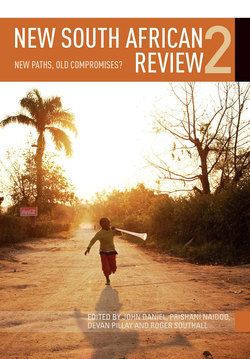Читать книгу New South African Review 2 - Paul Hoffman - Страница 25
На сайте Литреса книга снята с продажи.
NOTES
Оглавление1 Comments made at a Society, Work and Development Institute (SWOP) breakfast, Wits University, 5 February 2011.
2 In post-apartheid South Africa the term ‘African’ has been claimed by all South Africans, resulting in new hybrid terminology such as black African, coloured African etc.
3 See SADET (2006) for different perspectives on this issue.
4 These unions were initially more sympathetic towards the ANC – indeed the FCWU was a former Sactu affiliate (Pillay, 1989).
5 NUM was a former affiliate of the mildly black consciousness Council of Unions of SA (Cusa), which joined forces with the Azanian Confederation of Trade Unions (Azactu) to form the National Council of Trade Unions (Nactu) in 1986.
6 Prominent figures include Numsa’s Alec Erwin, Sactwu’s Johnny Copelyn and the NUM’s Marcel Golding.
7 In extreme form political unionism completely subordinates the unions to political party objectives, and robs them of real independence. Cosatu, on the whole, never quite went that far (Pillay, 2006).
8 This included the broad left within the alliance, not just those supporting Zuma (conversation with Langa Zita of the SACP, November 2005).
9 The presidency’s Alan Hirsch (2005) argues that Gear was always mixed with an increasingly redistributive social policy.
10 ANC Kwa-Zulu Natal provinicial secretary Sihle Zikalala (2010) shows that the Polokwane conference clearly affirmed the ANC as the political centre.
11 Cosatu and the SACP are suspicious of the intentions of the Youth League and the ‘predatory elite’, which it feels want to use nationalisation to increase opportunities for patronage. Nevertheless, unlike the SACP, Cosatu does feel that certain strategic sectors of the economy should come under state ownership, but with democratic control involving workers and consumers (starting with the current parastatals). The SACP wants to see ‘socialisation’ – democratic control – but believes it does not necessarily imply changes in ownership.
12 Discussions in December 2010 with a union leader in Cosatu (and SACP member) who actively promoted this idea, and in January 2011 with a former SACP official and DLF leader Mazibuko Jara who expressed scepticism about its viability. See also the Sunday Independent of 27 March 2011.
13 The conference declaration contains a wide range of far-reaching proposals on social justice, economic growth and rights to health and education – a far cry from Cronin’s alleged ‘right-wing’ liberal agenda.
14 Industrial Policy Action Plan 2.
15 This survey was conducted in 2008 by SWOP as part of a series of surveys done among Cosatu members before each of the past four national elections.
16 http://www.timeslive.co.za/specialreports/elections2011/article1080059.ece/Vavi-wins-over-Nelson-Mandela-Bay.
17 Discussion with Vishwas Satgar, a key organiser of the DLF, February 2011.
18 According to Steve Faulkner of Samwu (discussion, January 2011), had affiliates been individually invited, some, like Samwu, would have attended, even if only as observers.
19 Key figures are Mazibuko Jara (formerly Nzimande’s right-hand man in the SACP) and Vishwas Satgar (former Gauteng SACP provincial secretary).
